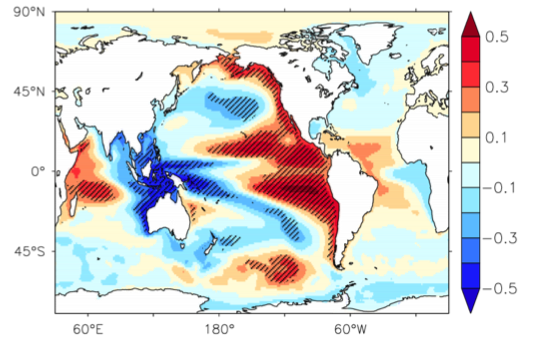Pacific sea level tilt predicts global temperature changes
The Pacific Ocean has a significant influence on global mean surface temperature (GST), as recently demonstrated during the 2015/16 El Niño. New research by Peyser et al. in Geophysical Research Letters shows a new way to quantify the role of the Pacific Ocean using sea level information rather than traditional sea surface temperature data. Due to the fact that water expands when heated, sea level can be used as a measure of heat stored throughout the entire ocean column, not just at the surface.

Sea level in the western tropical Pacific near Asia is tilted higher than the eastern Pacific off the coast of the Americas, as trade winds blow from east to west. However, the degree of this tilt changes over time, much like a seesaw. During an El Niño event, the west-to-east sea level tilt in the Pacific becomes smaller than usual, suggesting a release of heat from the deeper ocean and thereby increased GST. Using a set of state-of-the-art climate models, Peyser et al. systematically quantified this relationship between GST and Pacific sea level tilt.
With this relationship, Peyser et al. focused on notable behaviors of GST during the past two decades. Based on sea level observations by satellites, they found that the Pacific Ocean contributed 0.29°±0.10°C to the 1997/98 GST jump. In contrast, the fast sea level rise in the western tropical Pacific from 1998 to 2012 suggests 0.13°–0.16°C of suppressed global surface warming. Based on near-real time sea level data for 2015, the researchers predict a 0.21° ± 0.07°C annual mean GST increase associated with the 2015/16 El Niño event.
Pacific sea level rise patterns and global surface temperature variability (Geophysical Research Letters)
1University of Arizona
2California Institute of Technology
Topics
- Sea Level Rise
- Pacific Ocean
- Modeling
- ENSO
